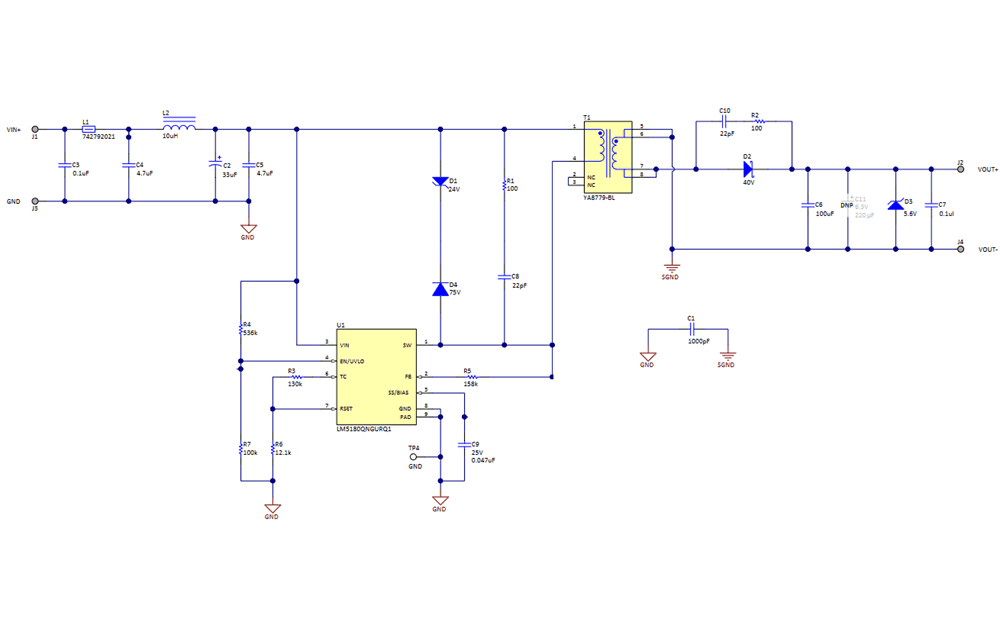SLOA285A October 2019 – October 2020 ISO7741 , ISOW7841 , LM25037 , LM25180 , LM5180 , LM5181 , LM5181-Q1 , UCC12040 , UCC12050
3 Primary Side Regulated (PSR) Flyback Topology
The PSR Flyback topology eliminates the need of an opto-coupler or tertiary winding and provides extremely tight load regulation using the feature of the resonant ring caused by the magnetizing inductance and the switch node capacitance. Compared to conventional Flyback, it operates in Discontinuous Conduction Mode (DCM) or Boundary conduction Mode (BCM) depending on the load. It, in turn, eliminates any errors from the transformer DC resistance (DCR) or secondary side diode to provide tight regulation.
The PSR Flyback operates in BCM/DCM with lower inductance (given the higher peak-to-peak ripple current) and lower switching losses compared to Continuous Conduction Mode (CCM) because the MOSFET turn-on and diode turn-off are at zero current. However, higher primary and secondary-side RMS currents in PSR Flyback result in conduction losses in the magnetic and semiconductors.
Figure 3-1 shows an example schematic for PSR Flyback topology using LM5180 device. It shows how transformer has only two windings and overall number of components is also less compared to conventional Flyback.
 Figure 3-1 PSR Flyback Configuration Showing Very Less Number of Total Components and Single Transformer
Figure 3-1 PSR Flyback Configuration Showing Very Less Number of Total Components and Single Transformer